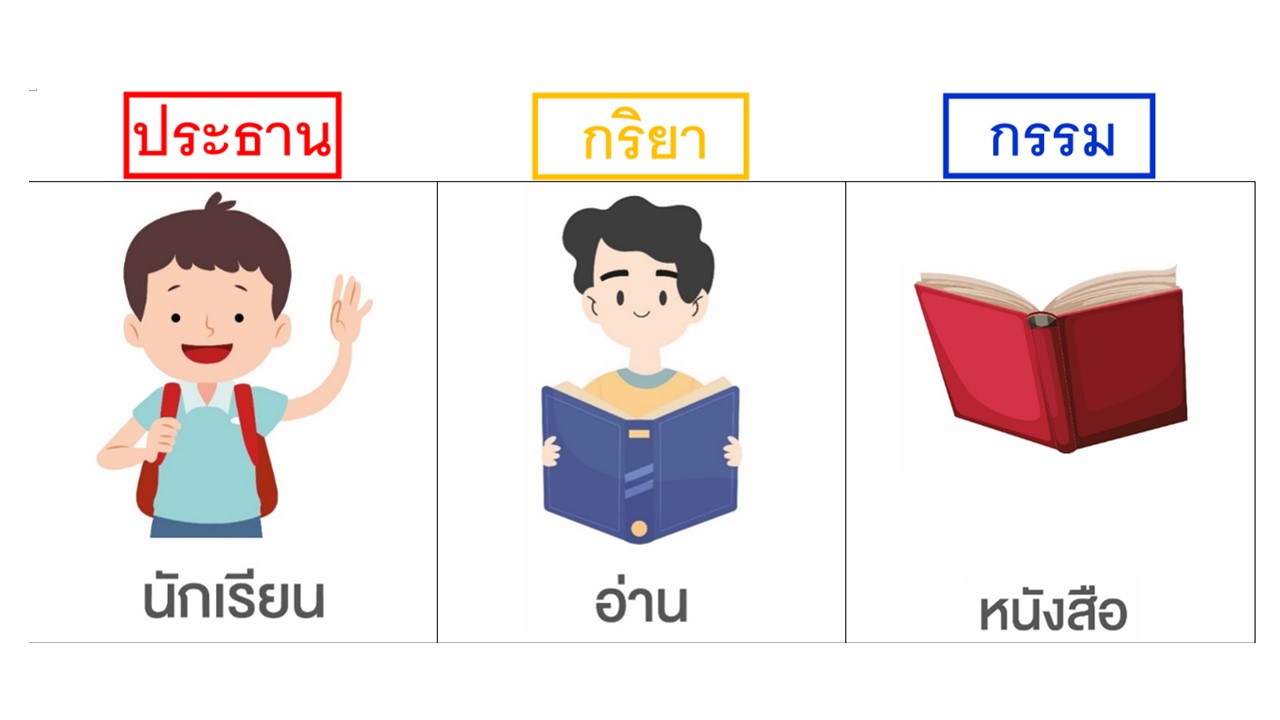TEACHING RESULTS BY USING THAI LANGUAGE SENTENCE LEARNING FLASH CARDS FOR DEAF STUDENTS
DOI:
https://doi.org/10.14456/nrru-rdi.2022.41Keywords:
Flash cards, Deaf students, Thai languageAbstract
This is study of the use of colour labels flash cards for the deaf to understand Thai language sentence in relation to sign language, which had two objectives; 1) to develop Thai language sentence learning flash cards for the deaf students, and 2) to evaluate the teaching results using the developed flash cards. The purposive selected sample groups consisted of 6 experts, 26 deaf students of grade 3, 11 deaf students of grade 4, and 3 teachers. Research tools consisted of media attribute assessment form developed by the visual design checklist, content assessment form, feedback questionnaire, and pre-posttests, which had discriminant index in the range of 0.2-1.0. Data were collected according to two lesson plans. The quantitative data was analyzed by frequencies, averages, percentages, and the differences of test results between pretest and posttest using the Related-Samples Wilcoxon Signed-Rank Test. The results showed that flash cards which had sign language vocabulary graphic and Thai vocabulary with graphic illustrations were effective. There were two sizes: large flash cards 14.50x20 cm and small flash cards 7x10 cm, 6 sentence component labels using rainbow colours, and the lesson plans. The quality assessment results were at the highest level and the post-test scores earned by the sample group were significantly different at 0.05 level.
References
Amatyakul, P., Deechongkit, S., & Khajorntdham, K. (2012). Getting to know and understand about the disabled persons. Bangkok : Duantula. (In Thai)
Atchareeyakosol, V. (1993). Evaluation of teaching materials. Journal of Education, 13-29. (In Thai)
Chaichareon, S. (2014). Teaching design, Principles, Theory to practice. Khonkhen : Annaoffset. (In Thai)
Danthanavanich, S. (2008). A grammar of Thai Sign Language. Thesis, Doctor of Philosophy Program in Linguistics, Mahidol University, Nakhonpathom. (In Thai)
Easterbrooks, S. R., & Baker, S. (2002). Language learning in children who are deaf and hard of hearing multiple pathways. USA : Allyn & Bacon.
Gallion, T. (2016). Improving vocabulary comprehension for deaf or hard of hearing students. Thesis, Master of Arts Program in Special Education, Marshall University, USA.
Habibi, N. (2017). The use of flashcards in improving vocaburary mastery of students with disability. Journal of Disability Studies, 4(2), 197-216.
King, C. M., & Quigley, S. P. (1985). Reading and Deafness. USA : College-Hill.
Komachali, M. E., & Khodareza, M. (2012). The Effect of Using Vocabulary Flash Card on Iranian Pre-University Students’ Vocabulary Knowledge. International Education Studies, 5(3), 134-147.
Kongsuwan, S. (2017). Thai sign language conversational structure: A case of classroom setting. Thesis, Master of Arts Program in Linguistics, Mahidol University, Nakhonpathom. (In Thai)
Luckner, J. L., Sebald, A. M., Cooney, J., Young, J., & Muir, S. G. (2005). An examination of the evidence-based literacy research in deaf education. American Annuals of the deaf, 150(5), 443-456.
Ministry of Education. (2008). Basic education core curriculum B.E. 2551. Bangkok : N.p. (In Thai)
Mooney, G. C. (2017). U.S. Patent No. 14/756, 854. California : Patent Application Publication.
Moores, D. F. (2001). Educating the deaf psychology, Principles, and Practice (5th ed.). USA : Houghton Mifflin.
Nabiyeva, N. R. qizi. (2020). Teaching english to deaf children at home. Science and Education, 1(3), 570-573.
National Association of the Deaf in Thailand. (2000). Thai Sign Language 3. Bangkok : Bophitkarnpim. (In Thai)
National Association of the Deaf in Thailand. (2004). Thai Sign Language 1 Revised edition (2nd ed.). Bangkok : Bophitkarnpim. (In Thai)
National Association of the Deaf in Thailand. (2004). Thai Sign Language 2 Revised edition (2nd ed.). Bangkok : Bophitkarnpim. (In Thai)
National Legislative Assembly. (2014). Study report on the provision of education for the deaf, Production and service of sign language interpreters. Bangkok : Committee on Social Affairs, Children, Youth, Women, Elderly, Disabled and Disadvantaged. National Legislative Assembly. (In Thai)
Newport, E. L. (1990). Maturational constraints on language learning. Cognitive Science, 14(1), 11-28.
Nuchpongsai, P., Khajorntdham, P., Danthanavanich, S., Boonyuen, P., & Sa-Ngounsai, P. (2010). Report on the condition of education for children with disabilities in Thailand. Nakhonpathom : N.p. (In Thai)
Prayurasook, P. (2014). Thai language principles, grade 3, volume 1 (2nd. ed.). Bangkok : Bannakit 1991. (In Thai)
Simahasan, A., Pusara, R., & Thongprem, S. (2012). Thai language, Grade 3. Bangkok : Aksorn Charoenthat. (In Thai)
Smaldino, S. E., Lowther, D. L., & Russell, J. D. (2008). Instructional technology and media for learning (9th ed.). NJ : Pearson Education.
Sornsiri, M., Jessadawirote, S., & Arunrat, C. (2012). Thai language principles and usage of Thai language Grade 3. Bangkok : Aksorn Charoenthat. (In Thai)
Special Education Bureau. (2022). Disability Schools. Retrieved March, 11, 2022, from http://special.obec.go.th/belong1.php (In Thai)
Special Education Bureau. (2022). Report of disability schools’ student. Retrieved March, 11, 2022, from http://www.specialset.bopp.go.th/set_index/index.php?page=student-deform.php (In Thai)
Sri-On, J., & Suksajadham, C. (2012). Manual for Disability support services staff. Nakhonpathom : N.p. (In Thai)
Suwanarat. M., Ratanasint, A., Rungsrithong, V., Anderson, L., & Wrigley, O. P. (Ed). (1990). The Thai Sign Language dictionary: Revised and extended edition. Bangkok : Thaiwattanapanit. (In Thai)
Wongrattana, C., & Naipat, O. (2008). Experimental research patterns and analytical statistics: basic concepts and methods. Bangkok : Chulalongkorn University Press. (In Thai)
Wu, T. C. (2017). U.S. Patent No. 14/876, 451. CA : Patent Application Publication.

Downloads
Published
How to Cite
Issue
Section
License

This work is licensed under a Creative Commons Attribution-NonCommercial-NoDerivatives 4.0 International License.




